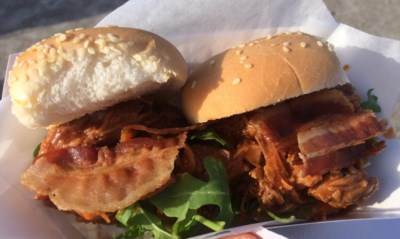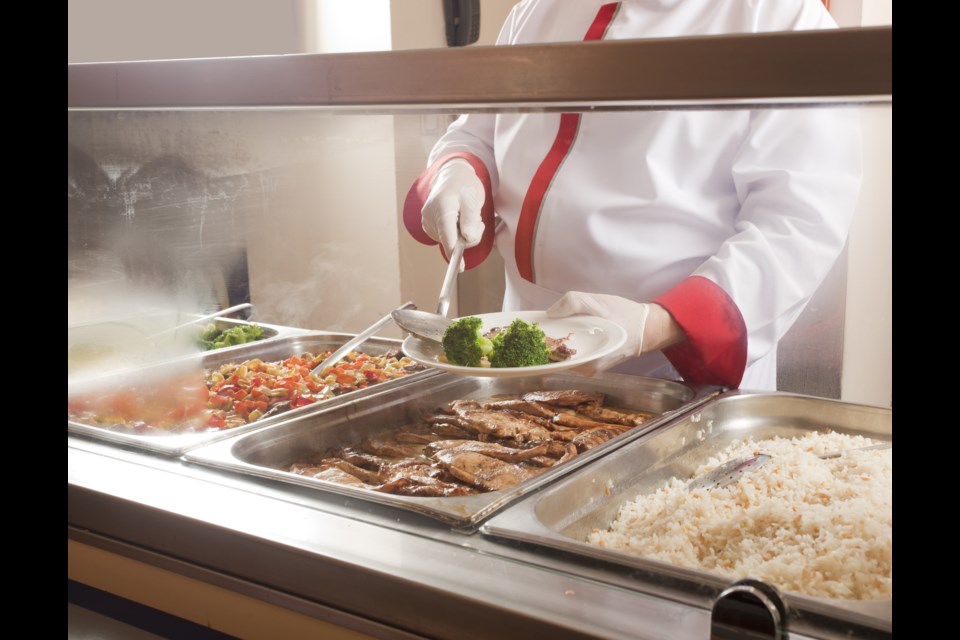When people go out to for a bite to eat, there is an assumption and expectation that the food served to them will be safe to eat. For Public Health Inspectors from the Porcupine Health Unit, it is an ongoing concern, and one they take extremely seriously.
All establishments serving food to the public are rigorously and randomly tested.
"Generally our inspections are unannounced. In some circumstances, when a food premise has unusual business hours, or business hours outside of our day, we will schedule," says Sandra Lapajne, one of nine inspectors currently employed with the PHU.
"All food premises are assessed based on risk. So a high-risk premise would be inspected a minimum of three times a year. A medium-risk two times a year, and a low-risk once a year," she said.
An example of a 'high risk' premise is a restaurant serving many different types of food, with multiple steps of food handling, such as a full service restaurant. Sandwich shops and pizzerias are most often in the 'medium risk' category. An example of a 'low risk' premise would be a convenience store which isn't directly handling food, but is serving it.
An establishment with a history of critical infractions should expect extra attention.
"When our inspection team does an annual risk assessment on a food premise, we do take into consideration the previous years history, and that does weigh into our inspections. We also do follow up with additional inspections if there has been issues of non-compliance, or complaints," said Lapajne.
The Porcupine Health Unit's EatWise program website lists all of the establishments in the region with critical infractions within a day or two of an inspection.
Inspectors look for many things including the staff's personal hygiene, safe preparation, and one of the most important aspects, temperature control.
"Other considerations that we're looking for are things like dish washing, equipment, storage, and sanitation," said Lapajne.
"Some of those things do give us an indication of how a food premise is being operated on days when there are no inspections being conducted, and we're able to talk with the operator to find out more information."
When issues are identified, orders and directions are provided on the spot. Operators are given time to correct the issues before being re-inspected. Timelines are based on the risk of the issue. Infractions deemed 'critical' must be dealt with immediately, such as moving food out of a malfunctioning unit.
"We do use progressive enforcement during our inspections. This means that inspectors consider more stringent options such as charges or closures to reflect the frequency and severity of the level of non-compliance," she said.
So what is an example of something that would get a food servery closed?
 Outdoor festivals and public events are also visited regularly by local health inspectors to ensure the safety of the public, Andrew Autio for TimminsToday
Outdoor festivals and public events are also visited regularly by local health inspectors to ensure the safety of the public, Andrew Autio for TimminsToday"If an inspector encounters a situation that would cause an immediate closure of the food premise, an example of that might be raw sewage that hasn't been dealt with, no running water, hot or cold, or a situation that would cause an immediate concern to food safety," said Lapajne.
She said those these types of infractions can occur at all types of facilities.
"When a facility is closed they have the opportunity to rectify the problem. We do a re-inspection once they've rectified the problem, and re-open them."
There are some jurisdictions in Ontario who have bylaws in place requiring establishments to prominently display their inspection results for everyone to see, such as the DineWise program in Toronto. Food premises are required to show their 'grade', be it A, B, C, or D.
"In the Porcupine region, we do not have a bylaw in place, but our Board of Health has voted to put critical infractions, closures, and charges on our website."
A 'critical infraction' is a violation which could lead to food born illness. Improper cooking temperatures, or a malfunctioning refrigerator can be used as examples.
Another issue long associated with 'dirty restaurants' are pests.
"We do look for sanitation during our inspections. Sanitation includes rodents and pests, and other things that can cause contamination to food. During an inspection, if that is identified, we work with the operator to find out what type of pest control measures have been done, and make recommendations on further pest control. When there are pest control issues that could lead to contamination of food, there may be a critical infraction there."
Even an establishment which does its best to maintain cleanliness and sterilization can be listed on the infraction list. The storage of cleaning supplies is also something that is inspected carefully. An infraction listed as 'toxic' might jump out as particularly worrisome for a consumer.
"The issue might have been where chemicals were stored in close proximity, or over top of food which could lead to direct contamination, and potentially chemical poisoning," said Lapajne.
If a member of the public experiences symptoms of food poisoning after dining at an establishment, they are advised seek the proper medical attention first, but reporting it is also very important.
"If a member of the public has a concern or a complaint about a food premise in our district, we welcome them to contact the Porcupine Health Unit to discuss. We do follow up on all calls and complaints, and we will discuss them with the complainant."
To give some perspective on how much work is done by PHU inspectors, 1223 compliance inspections were performed in 2016. There were a total of 348 follow-up visits required.



